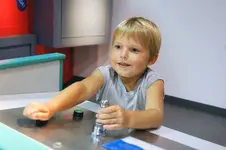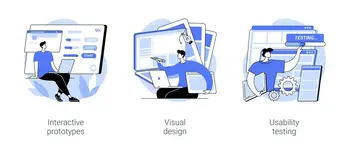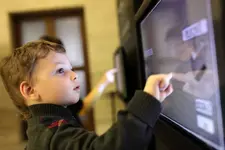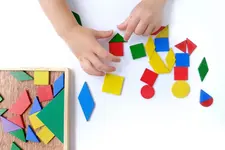
Table of contents
Interactivity is important in environmental education and sustainability. Interactive learning activities are more effective than traditional forms of education in promoting sustainable behavior change. This is because interactive learning engages learners and encourages them to think critically about their actions and the impact they have on the environment.
Environmental education is important for sustainable development. It is through education that people can learn about environmental protection and how to live sustainably. Environmental education provides learners with the knowledge and skills they need to make informed decisions about the environment.
The role of interactivity in environmental education and sustainability is important. Interactive learning activities are more effective than traditional forms of education in promoting sustainable behavior change. By engaging learners and encouraging critical thinking, interactive environmental education programs can help to create a more sustainable future.
What is environmental education sustainability?

Environmental education for sustainability is a way of learning that teaches people about the environment and how to protect it. It gives people the knowledge, skills, and values they need to make a difference in the world. This type of education combines environmental awareness, ecological understanding, and ethical responsibility to encourage people to take action to preserve natural resources and live in harmony with nature.
i. Environmental Awareness
Environmental education for sustainability is like a light that shows us how humans and the environment are connected. It teaches us about the effects of our actions on the environment, like how pollution hurts ecosystems and climate change threatens biodiversity. This education helps us understand how our choices affect the planet, and it motivates us to make changes that are better for the environment.
Environmental education can change the way we think about the environment. It can help us see the world as a delicate web of interconnected systems, and it can make us more aware of our impact on these systems. This education can also help us develop the skills and knowledge we need to take action to protect the environment.
Environmental education is important because it can help us create a more sustainable future. By teaching us about the environment and how to protect it, environmental education can help us make informed decisions about our lifestyles and our planet.
ii. Ecological Understanding

Ecological understanding is important for sustainability. It is a key part of environmental education, which teaches people about ecosystems and how different species interact with each other and the environment. Environmental education shows us how delicate the balance of nature is, and how even small changes can have big consequences. This understanding empowers us to make better choices about how we interact with the environment, and to protect our planet for future generations.
iii. Ethical Responsibility
Ethical responsibility is important in environmental education because it teaches people to care about the environment and to make decisions that protect it.
When people learn about the environment, they start to think about their role as caretakers of the Earth. They realize that their actions have a big impact on the environment, and they start to think about the future of the planet. They also start to think about the animals and plants that live in the environment, and they want to make sure that they are safe.
Environmental education can help people develop a strong sense of ethical responsibility. It can teach people to be more empathetic to the environment and to make decisions that are good for it. This can lead to people making changes in their own lives, like recycling and conserving water. It can also lead to people taking action to protect the environment, like volunteering for environmental organizations or protesting against pollution.
Ethical responsibility is an important part of environmental education because it can help people make a difference in the world. It can help people protect the environment for future generations and for all the animals and plants that live on Earth.
iv. Action-Oriented Learning

Action-Oriented Learning is a way of teaching about the environment that helps people take action to make it better. Instead of just learning about environmental problems, people learn how to solve them. They learn how to reduce their own impact on the environment, and they learn how to advocate for change.
For example, people might learn how to reduce their plastic use, or how to conserve energy. They might also learn how to raise awareness about climate change, or how to volunteer for a local clean-up campaign.
Action-Oriented Learning is important because it helps people make a real difference in the world. It doesn’t just teach people about environmental problems, it gives them the tools to solve them.
v. Holistic Approach
Sustainability is about more than just the environment. It also includes social and economic factors. Traditional environmental education focused on the environment, but now it also looks at how environmental problems affect people and the economy. This holistic approach to sustainability helps people understand how everything is connected. It shows how environmental problems can lead to social problems and economic problems. This understanding can help people find solutions that work for everyone. A holistic approach to sustainability can help us create a better future for everyone.
vi. Lifelong Learning
Sustainability is a never-ending journey to understand and solve the problems our environment has. Environmental education helps us on this journey by teaching us to always learn and adapt. As the world changes and new environmental problems come up, people with a good environmental education will have the tools they need to deal with them. This education will give them a deep understanding of how ecosystems work, the ability to think critically about scientific research, and the insights they need to make good decisions that help the environment. Environmental education also teaches us to keep learning throughout our lives, so we can stay up-to-date on the latest information and be involved in the conversation about sustainability. This helps us to create a better relationship between people and nature.
In a world that is always changing, environmental education’s focus on lifelong learning is like a compass that guides us through the complexities of environmental problems. Learning about the environment is not just about sitting in a classroom. It can also mean staying informed about the latest research, participating in community projects, and learning from others. As we learn more about the environment, we develop a better understanding of how all the different parts of the world are connected. This understanding helps us to adapt our strategies, find new solutions, and take action to make the world more sustainable. Environmental education is a lifelong journey that empowers us to meet the challenges of today and tomorrow.
vii. Global Perspective

Environmental education for sustainability is about more than just learning about the environment. It’s about understanding how our actions impact the planet and taking steps to protect it. This type of education encourages people to think globally and act locally. It teaches us about the challenges we face as a planet, like climate change, pollution, and resource depletion. And it gives us the tools we need to make a difference.
One of the most important things environmental education can do is raise awareness. When people understand the problems we face, they’re more likely to want to help solve them. Environmental education can also help people develop a deeper understanding of the environment. This includes understanding the interconnectedness of all living things and the importance of biodiversity.
In addition to raising awareness and promoting understanding, environmental education can also help people develop a sense of ethical responsibility. This means understanding that we have a duty to care for the planet and its resources. Environmental education can also inspire people to take action. This can include making changes in their own lives, like recycling and conserving energy. It can also include getting involved in activism and working to make a difference on a larger scale.
Ultimately, environmental education is about creating a more sustainable future. By combining knowledge and action, we can create a world where people and the planet can thrive together.
Here are some specific examples of how environmental education can be used to address global challenges:
- Climate change: Environmental education can teach people about the causes and effects of climate change. It can also teach people about how they can reduce their carbon footprint.
- Pollution: Environmental education can teach people about the different types of pollution and their effects on the environment. It can also teach people about how they can reduce their pollution output.
- Resource depletion: Environmental education can teach people about the importance of conserving natural resources. It can also teach people about how they can reduce their consumption of resources.
By addressing these global challenges, environmental education can help create a more sustainable future for everyone.
What is the role of environmental education in sustainability?

Environmental education is important for creating a sustainable future. It helps people learn about environmental problems, understand how they can be solved, and take action to protect the environment. This section looks at how environmental education can help individuals and society as a whole become more sustainable.
1. Raising Awareness and Understanding
Environmental education helps people understand how they are connected to the environment. It teaches about the different parts of the environment, like ecosystems, climate patterns, and biodiversity. This helps people understand how human activities can affect the environment, like how we use resources, pollute the air and water, and destroy habitats.
2. Fostering a Sense of Responsibility
Environmental education teaches people about the consequences of unsustainable practices, like climate change and pollution. This helps people understand their role in environmental degradation and encourages them to make changes to their lifestyles to be more sustainable. For example, people might start recycling more, using less water, or driving less. This sense of responsibility also extends to future generations, as people learn the importance of preserving natural resources and biodiversity for future generations to enjoy.
3. Promoting Informed Decision-Making
Sustainability depends on making good choices. Environmental education teaches people about the environment and how to protect it. This knowledge helps people make choices that are better for the environment, like using eco-friendly products, saving energy, and supporting policies that protect the environment. When people are educated about sustainability, they can make a real difference in the world.
Here are some specific examples of how environmental education can help people make informed decisions about sustainability:
- Learning about the environmental impact of different products can help people choose eco-friendly products when they shop.
- Learning about energy efficiency can help people reduce their energy consumption.
- Learning about environmental policy can help people advocate for policies that protect the environment.
By educating people about sustainability, we can empower them to make choices that help protect the environment and create a more sustainable future.
4. Inspiring Active Citizenship

People who know a lot about the environment are more likely to help protect it. Environmental education helps people learn about environmental policies, rules, and agreements. This knowledge gives people the power to speak up about environmental problems, hold people accountable, and help create good environmental policies.
5. Cultivating Critical Thinking and Problem-Solving Skills
Environmental problems are hard to understand and have many parts. Environmental education teaches people how to think clearly and solve problems. This helps people figure out the reasons for problems and create new ways to fix them. These skills are important for dealing with the changing and connected challenges of keeping our planet healthy.
6. Empowering Youth Leadership
Teaching kids about the environment helps them become future leaders who care about sustainability. When kids learn about the environment from a young age, they are more likely to become leaders in environmental conservation, policy-making, and innovation.
7. Connecting Local and Global Perspectives
Environmental education, like the work of UNESCO and figures like Wangari Maathai, bridges the gap between local actions and global consequences.
Learners understand how their individual choices, like recycling or turning off the lights when they leave a room, ripple outward, impacting not only their immediate surroundings but also contributing to global environmental issues such as climate change.
This perspective encourages a holistic approach to sustainability, where people consider all aspects of the environment, not just one issue.
The Importance of Interactivity in Environmental Education
To solve the environmental problems we have, education is very important. But the old way of teaching doesn’t work well. It’s hard to keep students interested. This section talks about how interactive learning is better for environmental education. It helps students learn more and makes them want to help the environment.
(a) Enhanced Engagement and Interest

Interactive learning in environmental education is more fun and interesting than just listening to a lecture. It uses tools like simulations, virtual tours, and hands-on activities to get learners involved and engaged. This makes them more curious about the subject and helps them learn better. Learners become active participants instead of just passive listeners, which leads to better memory and understanding of the material.
(b) Real-World Application and Relevance
Interactive learning helps people learn by doing. Instead of just reading about environmental problems, learners can experience them through interactive scenarios and problem-solving exercises. This helps them understand the real-world consequences of their actions and make better choices that protect the environment. For example, learners can play a game where they have to make decisions about how to use energy in a city. This helps them see how their choices can affect the environment. Interactive learning is a powerful way to teach people about environmental issues and empower them to make a difference.
(c) Holistic Understanding of Complex Concepts
Environmental problems are often complicated and linked together. Interactivity lets learners see difficult ideas, like ecosystems, climate systems, and food chains, in a moving way. Interactive visualizations and models provide a better understanding of cause-and-effect relationships, which helps people understand environmental dynamics as a whole.
(d) Personalised Learning Journeys
Everyone learns differently and at their own speed. Interactivity lets people learn in a way that suits their individual preferences and needs. Interactive platforms can change the content to match how well each learner is doing, so that everyone understands and remembers the information.
(e) Encouraging Critical Thinking and Problem-Solving

Interactive activities make learners think hard by giving them problems to solve that need them to analyze and come up with creative solutions. Whether it’s designing ways to clean up pollution or managing resources in a computer game, interactivity helps learners develop skills they need to solve real-world environmental problems.
(f) Fostering Collaboration and Communication
Many environmental problems need everyone to work together to solve them. Interactive learning helps people learn together, share ideas, and talk to each other. This is like how people need to work together to solve global environmental problems.
(g) Long-Term Behavioural Change
Sustainable practices are more likely to be used when people learn about them in a hands-on way. Activities that let people pretend to make eco-friendly choices and see the results can change their minds and make them want to be more sustainable in real life.
Here are some specific examples of interactive experiences that can help people learn about sustainability:
- Playing a video game where you have to make choices about how to run a sustainable city.
- Taking a field trip to a recycling plant or a solar farm.
- Participating in a community cleanup project.
- Creating a sustainability action plan for your own home or school.
These are just a few ideas, but there are many other ways to make learning about sustainability interactive and engaging. The important thing is to get people involved and let them see the impact that their choices can have.
The Impact of Interactivity on Environmental Education
In environmental education, interactivity is changing the way people learn about the environment. Interactive learning methods, like games and simulations, help people understand complex ecological systems better. They can also inspire people to take action to protect the environment. This section will discuss how interactivity is making environmental education more effective.
1. Enhanced Engagement and Immersion

Old-fashioned ways of teaching, where students just sit and listen, are boring and don’t keep kids’ attention. Interactive learning is more fun and interesting. It uses things like simulations, virtual field trips, and videos to make learning more exciting. This helps students learn better and understand environmental topics more deeply.
2. Dynamic Visualisation of Environmental Concepts
Environmental education is often about complicated ideas that can be hard to understand just by reading books. Interactivity makes these ideas come alive by letting learners interact with pictures and simulations. By using these moving pictures, learners can explore complicated environmental events, which helps them better understand ecosystems, climate patterns, and environmental processes.
3. Empowerment through Hands-On Learning
Interactivity is not just about using computers. It can also be about doing things in the real world. For example, learners can go on interactive workshops, field trips, or nature hikes. These activities let learners interact with the environment and learn about it in a hands-on way. When learners experience nature for themselves, they develop a real connection to it. This can lead to a sense of stewardship and responsibility for the environment.
4. Critical Thinking and Problem-Solving Skills
Interactivity helps people learn to think critically by giving them interactive challenges and puzzles about environmental issues. These activities help people analyze situations, make decisions, and come up with creative solutions. These skills are important for solving the complex and ever-changing problems of environmental sustainability.
5. Personalised Learning and Adaptability
People learn in different ways and at different speeds. Interactive learning can help accommodate this diversity by providing personalized learning experiences. Interactive platforms can adapt the difficulty and pacing of content to ensure that learners of all backgrounds and abilities can effectively engage in environmental education.
6. Inspiring Action and Behavioural Change
Interactivity can make learning more personal and engaging, which can lead to lasting changes in behavior. When learners are able to interact with a scenario and see the consequences of their actions, they are more likely to make choices that are better for the environment. By experiencing the outcomes of their decisions firsthand, learners are motivated to adopt environmentally friendly behaviors.
7. Preparation for Real-World Challenges

The world is facing new environmental problems all the time. Interactivity helps people learn how to deal with these problems. When people interact with case studies and problem-solving activities, they learn how to think about problems and find solutions. This helps them to conserve the environment and make it sustainable.
Interactivity is a powerful tool in environmental education. It helps people learn about complex environmental concepts in a way that is engaging and interesting. It also helps people to think critically about environmental issues. This makes them better advocates for a sustainable future.
As technology continues to advance, interactivity will become even more important in environmental education. It is important to use interactivity to make environmental education impactful, relevant, and useful for people of all ages. This will help to create a generation of people who are committed to environmental stewardship.
Here are some specific examples of how interactivity can be used in environmental education:
- Interactive case studies can help people to learn about real-world environmental problems.
- Problem-solving activities can help people to develop the skills they need to take action on environmental problems.
- Simulations can help people to experience environmental problems in a safe and controlled environment.
- Virtual reality can help people to explore the natural world and learn about its importance.
Interactivity is a powerful tool that can be used to make environmental education more effective. By using interactivity, we can help people to learn about environmental problems, develop the skills they need to solve them, and become advocates for a sustainable future.
Collaboration and Creativity in Environmental Education

Collaboration and creativity are important for environmental education. Collaboration helps us learn from different people and come up with new ideas. Creativity helps us solve problems in new ways. This section will talk about how collaboration and creativity can help us create a more sustainable future.
i. Collaboration as a Catalyst for Learning
Collaboration is important for environmental education. When learners work together on projects, discuss things, and attend workshops, they learn about different viewpoints on environmental issues. This helps them understand the issues better and come up with solutions that work for everyone.
ii. Empathy and Shared Responsibility
Working with others helps students understand how other people think and feel. This understanding helps students see the world from different perspectives, including cultural, social, and economic perspectives. This understanding is important for solving environmental problems, because it helps students see that sustainable solutions need to take into account the needs of different people and groups.
iii. Cross-Disciplinary Exploration
Environmental problems are complicated and can’t be solved by just one kind of expert. Working together on projects with people from different subjects helps students learn about different parts of the environment. By combining knowledge from science, social studies, and the humanities, students can get a better understanding of complex environmental issues.
iv. Innovative Problem-Solving through Creativity
Creativity is important for finding new ways to solve environmental problems. When people are encouraged to think creatively, they come up with new ideas that can help us protect the environment. For example, students can be asked to design eco-friendly products or create plans for sustainable cities. These creative assignments help students to think outside the box and come up with original ideas that can make a difference.
v. Inspiring Personal Connection and Engagement

Creative projects and activities help learners connect with environmental issues in a personal way. Art, stories, and hands-on activities touch learners on an emotional level, making them care about environmental topics and want to learn more. Creativity turns learning from something boring into something exciting and meaningful.
vi. Collaborative Projects for Real-World Impact
Working together on projects that help the environment can help students make real changes. Activities like cleaning up the community, planting trees, and raising awareness of environmental issues can teach students how to put their knowledge into action and make a difference in their own neighborhoods.
vii. Promoting a Culture of Innovation
The world needs new ideas to solve environmental problems. Collaboration and creativity in environmental education help people learn to think new ways and solve problems together. This prepares people to work in the field of environmental sustainability.
Collaboration means working together with other people. Creativity means coming up with new ideas. Both collaboration and creativity are important for environmental education. Collaboration helps people learn from each other and share ideas. Creativity helps people come up with new solutions to environmental problems.
Educators need to teach people how to collaborate and be creative. This will help people make a difference in the world.
Here are some specific environmental activities examples of how collaboration and creativity can be used in environmental education:
- Students can work together to research environmental problems and come up with solutions.
- Students can create art, music, or stories about environmental issues.
- Students can participate in community service projects that help the environment.
By teaching collaboration and creativity, educators can help students become the next generation of environmental leaders.
The Role of Collaboration in Environmental Education

Collaboration is important in environmental education because it helps students work together to solve problems and come up with solutions. When students work in groups, they can learn from each other and build on each other’s ideas. This can lead to a better understanding of environmental issues and a stronger appreciation for the planet.
A study by
Thomas et al. (2018)
found that collaborative environmental education programs can have positive effects on students’ cognitive, behavioral, social, and ecological development. This means that students who participate in collaborative environmental education programs are more likely to have increased knowledge and understanding of environmental issues, improved attitudes toward the environment, and increased engagement in sustainable behaviors.
Collaboration can also help students develop critical thinking skills. When students work in groups, they are forced to consider different perspectives and think critically about the information presented to them. This can help them develop a deeper understanding of environmental issues and the impact of human behavior on the planet.
Here are some examples of how collaboration can be used in environmental education:
- Students can work together to research environmental issues and develop solutions.
- Students can work together to create environmental awareness campaigns.
- Students can work together to clean up a local environment.
- Students can work together to advocate for environmental policies.
Collaboration is a powerful tool that can be used to educate students about environmental issues and inspire them to take action. It is an important part of any environmental education program.
Fostering Creativity in Environmental Education

Creativity is a big part of environmental education. When students think creatively, they can come up with new ways to solve environmental problems. This can help us find new ways to deal with global warming and other environmental challenges.
One way to get students to be creative is to use art. Art can help people learn about the environment and why it’s important to protect it. When art is used in environmental education, students can get a better understanding of the planet and why we need to be sustainable.
Technology can also help students be creative. Technology can be used to make environmental education programs more fun and engaging. For example, virtual reality can be used to create simulations that allow students to explore different ecosystems and learn about the impact of human behavior on the planet.
In conclusion, collaboration and creativity are important parts of environmental education. When students work together and think creatively, they can learn more about environmental issues and how to protect the planet. Educators can help students be more creative by using art and technology in environmental education programs.
Here are some specific examples of how art and technology can be used in environmental education:
- Art: Students can create paintings, sculptures, and other artwork that expresses their feelings about the environment. They can also write poems, songs, and stories about the environment.
- Technology: Students can use virtual reality to explore different ecosystems. They can also use computer models to simulate the effects of climate change.
By using art and technology, educators can help students develop their creativity and learn more about the environment. This is important because creativity is essential for solving environmental problems.
Industrial Ecology and Experiential Learning

Industrial ecology is the study of how human systems can work with nature to use resources more efficiently and reduce waste. It is important for environmental education because it helps us understand how our economy, society, and environment are connected.
A study by Chertow and Ehrenfeld found that
industrial ecology is critical to achieving sustainability
. They argued that industrial ecology can help us identify ways to reduce resource consumption and waste generation. It can also help us create new products and services that are more sustainable.
Here are some examples of how industrial ecology can be used to achieve sustainability:
- A company can use recycled materials to make its products.
- A factory can capture and reuse waste heat to power its operations.
- A city can develop a system for composting food waste and use it to fertilize gardens.
Industrial ecology is a complex discipline, but it is an important one for our future. By understanding how human systems and natural systems interact, we can create a more sustainable world.
(a) Understanding Complex Systems
Industrial ecology is a way of thinking about how industries work. It looks at how industries use resources, make products, and get rid of waste.
Learners can use industrial ecology to understand how industries affect the environment. They can see how industries use up resources, pollute the air and water, and create waste.
Insights from industrial ecology can help learners make decisions about how to make industries more sustainable. They can choose to use less resources, pollute less, and create less waste.
(b) Promoting Sustainable Mindsets
Environmental education that teaches about industrial ecology helps people think about how to make our industries more sustainable. Instead of seeing industries as separate from the environment, we can see them as part of a larger system. This helps us understand the importance of conserving resources, reducing waste, and minimizing our impact on the environment.
(c) Cultivating Systems Thinking

Industrial ecology is a way of thinking about how industries work together. It looks at how inputs, like raw materials, are turned into outputs, like products. It also looks at how the waste from one industry can be used as an input for another industry. This way, we can use resources more efficiently and reduce pollution.
Industrial ecology encourages learners to think about systems. This means looking at how everything is connected. When we understand how different parts of a system work together, we can make better decisions about how to use resources.
This skill is important for understanding and addressing environmental issues. Many environmental problems are caused by the way we produce and consume goods and services. By thinking about systems, we can design more sustainable ways of doing things.
(d) Encouraging Cross-Disciplinary Collaboration
Industrial ecology is a field of study that looks at how businesses and industries can work together to reduce their environmental impact. It is a multidisciplinary field that requires collaboration between scientists, engineers, economists, and policymakers. Environmental education that focuses on industrial ecology can help students develop the skills and knowledge they need to solve complex environmental problems.
(e) Inspiring Innovation in Sustainability
As companies try to find ways to make their impact on the environment smaller, new ideas become very important. Industrial ecology teaches students about new ways of doing things, like circular economy models, eco-industrial parks, and sustainable design principles. By encouraging students to come up with new ideas, industrial ecology helps them contribute to the development of sustainable industries.
(f) Addressing Global Environmental Concerns
Industrial activities can cause many environmental problems, like running out of resources and making the air and water dirty. Learning about industrial ecology in environmental education helps people understand these problems. With this knowledge, they can work to make policies and practices that will help protect the environment.
(g) Preparation for Sustainable Careers
Industries are starting to realize that they need people who care about the environment.
Environmental education that focuses on industrial ecology teaches people skills that are in high demand in the job market.
Graduates of these programs will be able to lead sustainable initiatives and help industries become more environmentally friendly.
In conclusion, integrating industrial ecology into environmental education is a big step towards creating more environmentally conscious people. By teaching people about industrial systems, sustainable thinking, and interdisciplinary collaboration, industrial ecology prepares people to make a positive impact on industries and the world around them. As we move towards a more sustainable future, industrial ecology is essential in environmental education, as it is shaping a generation of advocates and innovators who are committed to protecting our planet’s resources and natural balance.
Early Childhood Education and Virtual Reality in Environmental Education

Early childhood education is important for shaping young minds and teaching them to appreciate the environment. Virtual reality (VR) can be a powerful tool for environmental education in early childhood, because it can:
Enhance engagement: VR can help young children learn about the environment in a more immersive and engaging way. They can feel like they are actually there, which can make them more interested in what they are learning.
Foster exploration: VR can allow young children to explore different environments that they might not otherwise be able to visit. This can help them learn about different ecosystems and the plants and animals that live there.
Cultivate environmental consciousness: VR can help young children develop a sense of responsibility for the environment. When they see the effects of climate change or pollution firsthand, they are more likely to care about protecting the planet.
Captivating Young Minds through Immersive Experiences:
Early childhood education is all about keeping kids engaged with interactive experiences. Virtual reality (VR) is a unique way to immerse kids in captivating virtual worlds. VR can transport young learners to different ecosystems, where they can see animals and natural phenomena up close. This can spark their curiosity about the environment and help them develop a sense of environmental awareness.
Creating Memorable Learning Moments:
Virtual reality (VR) is a powerful tool that can create memorable and impactful learning experiences for early childhood learners. VR allows children to explore different places and environments in a safe and controlled way, which can help them to develop their cognitive skills and learn about the world around them. For example, VR can be used to take children on a virtual field trip to a zoo, where they can see and learn about different animals. VR can also be used to teach children about environmental concepts, such as climate change and pollution. By providing children with immersive and interactive learning experiences, VR can help to spark a lifelong interest in learning and exploration.
Enabling Safe Exploration and Discovery:

Virtual reality (VR) is a technology that allows people to experience a simulated environment. VR headsets create a sense of immersion by blocking out the real world and displaying images and sounds that simulate a different environment. This makes VR a safe and controlled space for young children to explore environments that might otherwise be inaccessible or unsafe.
For example, children can use VR to explore underwater coral reefs without getting wet or getting stung by jellyfish. They can also explore dense rainforests without getting lost or bitten by insects. VR can also be used to teach children about different cultures and historical events.
Overall, VR is a powerful tool that can help young children learn and explore in a safe and controlled environment. It can foster a sense of wonder and connection with the natural world, and it can help children develop empathy for others.
Stimulating Multisensory Engagement:
Early childhood education benefits from multisensory experiences that meet children’s developmental needs. Virtual reality (VR) engages multiple senses, such as sight, hearing, and touch, providing a stimulating environment for learning. VR experiences can help children to develop a deeper understanding of the world around them and encourage them to explore their surroundings more actively.
Fostering Empathy and Conservation Values:
Virtual reality (VR) can help children develop empathy by letting them experience the world from different perspectives. For example, VR can be used to simulate the effects of environmental changes, such as climate change or deforestation. This can help children understand the challenges that animals and ecosystems face, and make them more likely to care about these issues. This empathy can then lay the foundation for developing conservation values at a young age.
Encouraging Active Participation:
Virtual reality (VR) can be used to make learning more fun and interactive. VR experiences can be designed to let kids make choices that affect a virtual ecosystem. This helps them learn about how their actions can impact the environment. By seeing the effects of their choices, kids can develop a sense of responsibility for the environment.
Supporting Educators with Innovative Tools:
Early childhood teachers are important in teaching kids about the environment. Virtual reality is a new tool that teachers can use to make learning more fun and interesting. VR experiences can be used to supplement traditional teaching methods, making lessons more engaging and effective.
In conclusion, using virtual reality (VR) in early childhood education is a great way to teach kids about the environment. VR can capture kids’ attention, create memorable experiences, and help them develop empathy for the environment. This can lead to a generation of kids who care about the environment and want to protect it. As VR technology continues to improve, it will become even more powerful tool for teaching kids about the environment. VR has the potential to help create a more sustainable future by raising environmentally conscious citizens.
Environmental Education Activities for Elementary Students

For elementary students, experiential and interactive activities are essential for developing a lasting bond with the natural world. This section presents a variety of stimulating environmental education activities for elementary students that promote awareness, inquisitiveness, and a sense of environmental stewardship.
Nature Scavenger Hunt:
Organize a nature scavenger hunt in the school garden or local park. Provide students with a list of items to find, such as leaves, rocks, insects, and specific plants. This activity encourages observational skills and introduces students to the biodiversity in their surroundings.
Planting and Gardening:
Set up a school garden where students can plant flowers, herbs, or vegetables. This hands-on activity teaches students about plant life cycles, care, and the importance of green spaces for the environment. They can watch their plants grow and learn about sustainable gardening practices.
Recycled Art Creations:
Turn waste into art by organizing a recycled art project. Provide students with materials like cardboard, plastic bottles, and paper scraps. Encourage them to create sculptures, collages, or functional objects, fostering creativity while promoting recycling and waste reduction.
Wildlife Watching and Identification:

Arrange a wildlife observation session where students can spot birds, insects, or small animals. Provide binoculars and identification guides to help them identify the species they encounter. This activity sparks curiosity about local wildlife and their roles in the ecosystem.
Nature Journals:
Distribute nature journals to students and encourage them to record their observations during outdoor activities. They can sketch plants, describe animals, and jot down their thoughts. Nature journals promote writing skills, encourage mindfulness, and cultivate a connection with nature.
Environmental Storytelling:
Read age-appropriate books or share stories about environmental themes with students. Afterward, engage them in discussions about the stories’ messages and encourage them to create their own eco-friendly tales. This activity fosters literacy skills and instills environmental values.
Waste Audit and Sorting:
Conduct a waste audit where students collect and categorize waste generated in the classroom. Guide them in separating recyclables, compostables, and non-recyclables. This activity raises awareness about waste management and encourages responsible disposal habits.
Weather and Climate Monitoring:
Set up a weather station in the schoolyard. Students can measure temperature, rainfall, and wind speed daily. Over time, they can analyze the data to understand weather patterns and explore the concept of climate change.
Mini Ecosystem Terrariums:
Have students create small terrariums using clear containers, soil, rocks, and plants. This hands-on activity illustrates how ecosystems function and allows students to observe interactions between living organisms and their environment.
Environmental Action Projects:
Empower students to take action by initiating projects like litter clean-ups, tree planting, or designing eco-friendly posters for the school. These projects provide a sense of agency and demonstrate the positive impact of collective efforts.
In conclusion, engaging environmental education activities for elementary students lay the foundation for fostering a lifelong appreciation for the natural world. By immersing students in hands-on experiences, sparking curiosity, and promoting responsible practices, educators can inspire the next generation of environmentally conscious citizens who will play a vital role in safeguarding our planet’s future.
ESD for 2030 and the Future of Environmental Education

Education for Sustainable Development (ESD)
has become a really important way to teach people about the environment and how to protect it. As we get closer to 2030, a year when we need to make a lot of progress on sustainability goals, ESD is even more important. This section talks about how ESD and environmental education can work together to create people who are informed about the environment, who will take responsibility for protecting it, and who will take action to make a difference.
Holistic Sustainability Approach: ESD for 2030 teaches people about the environment, society, and economics, and how they all work together. This helps people understand how environmental problems affect society and the economy.
Empowerment and Critical Thinking: ESD for 2030 teaches people to think critically about environmental problems and to come up with solutions. This helps people make informed decisions about the environment.
Global Citizenship and Responsibility: ESD for 2030 teaches people about the global community and their responsibility to protect the environment. This helps people understand that their actions can have a big impact on the planet.
Innovative Pedagogical Approaches: ESD for 2030 uses interactive teaching methods that get people involved in learning about the environment. This helps people learn by doing and makes learning more fun.
Socio-Ecological Resilience: ESD for 2030 teaches people how to adapt to changes in the environment and to build a more sustainable future. This helps people learn how to live in harmony with nature.
Ethical Values and Decision-Making: ESD for 2030 teaches people about the importance of ethical values in decision-making. This helps people make choices that are good for the environment and for society.
Partnerships and Collaboration: ESD for 2030 encourages people to work together to solve environmental problems. This helps people build relationships and to achieve more than they could alone.











